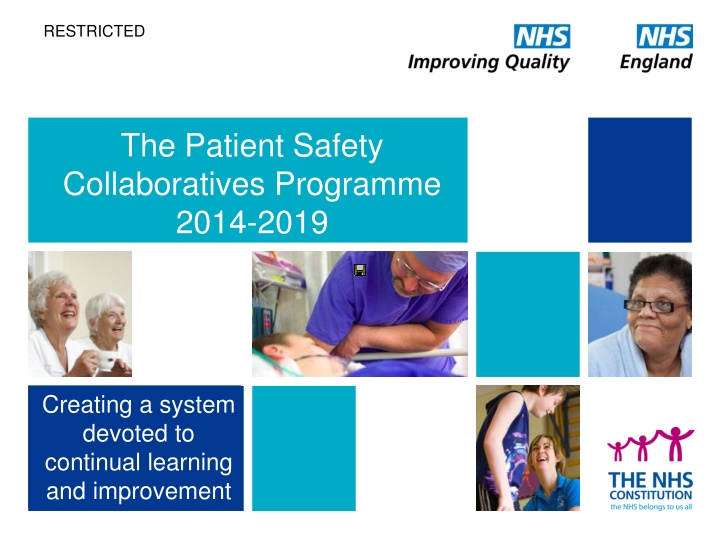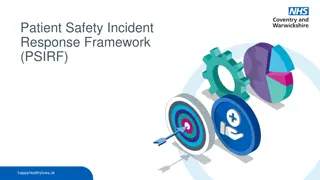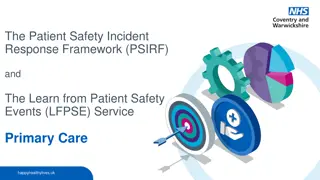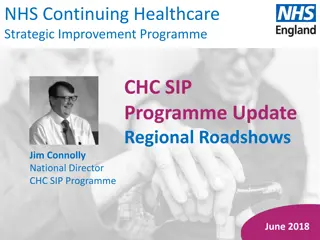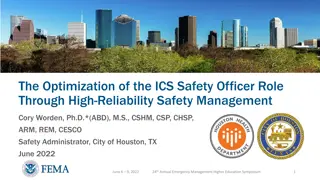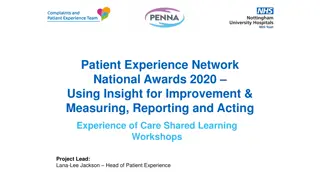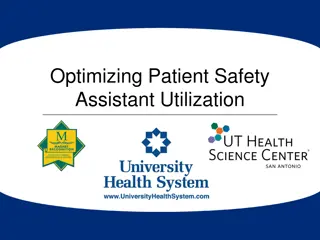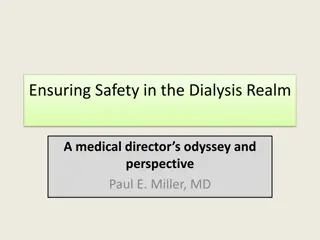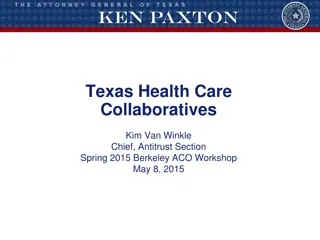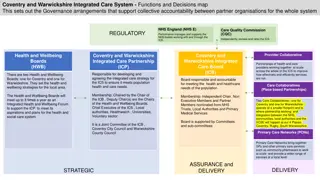Creating a System Devoted to Continual Learning and Improvement in Patient Safety Collaboratives Programme
The Patient Safety Collaboratives Programme from 2014-2019 emphasizes continual learning and improvement in patient care within the NHS. The focus is on placing patient care quality above all, engaging patients and carers, developing staff abilities, and fostering transparency for accountability and growth. The programme aims to create a learning organization committed to patient safety, applying systematic improvements across England through education and training initiatives.
Download Presentation

Please find below an Image/Link to download the presentation.
The content on the website is provided AS IS for your information and personal use only. It may not be sold, licensed, or shared on other websites without obtaining consent from the author.If you encounter any issues during the download, it is possible that the publisher has removed the file from their server.
You are allowed to download the files provided on this website for personal or commercial use, subject to the condition that they are used lawfully. All files are the property of their respective owners.
The content on the website is provided AS IS for your information and personal use only. It may not be sold, licensed, or shared on other websites without obtaining consent from the author.
E N D
Presentation Transcript
RESTRICTED The Patient Safety Collaboratives Programme 2014-2019 Creating a system devoted to continual learning and improvement
A system devoted to continual learning and improvement RESTRICTED Don Berwick Findings The most important single change in the NHS in response to this report would be for it to become, more than ever before, a system devoted to continual learning and improvement of patient care, top to bottom and end to end. Our most important recommendations for the way forward envision the NHS as a learning organisation, fully committed to the following: Placing the quality of patient care, especially patient safety, above all other aims: Engaging, empowering, and hearing patients and carers throughout the entire system and at all times: Fostering whole-heartedly the growth and development of all staff, including their ability and support to improve the processes in which they work: Embracing transparency unequivocally and everywhere, in the service of accountability, trust, and the growth of knowledge.
A system devoted to continual learning and improvement RESTRICTED The Patient Safety Collaborative for England Key features: Learning from the past, adapting what works in improvement Systematic application across England with widespread engagement Positioned as transformational not transactional change Set within the context of NHS England s Patient Safety Plan Clinically led; across all healthcare organisations and all sectors providers and commissioners Focused on less but at scale to demonstrate results in year one Using a range of improvement tools, techniques, social movement approaches and capability building 3
A system devoted to continual learning and improvement RESTRICTED The programme has two major strands Establish and support 15 networked and connected Patient Safety Collaboratives across England - focused on delivering definitive and measurable improvements in specific patient safety issues over the next 5 years A system devoted to continual learning and improvement Build System wide capability for patient safety across England through a systematic education and training programme - in collaboration with key education and capability partners with safety becoming a core skill across healthcare 4
A system devoted to continual learning and improvement RESTRICTED Patient safety collaboratives AHSN footprint 2-5m population Call for bids Around 500k funding for; 1 collaborative manager 2 clinical co-leads 1 analytical lead 3 improvement managers and 1 admin support + locally commissioned improvement support 5
A system devoted to continual learning and improvement RESTRICTED Patient safety collaboratives core priorities Core Collaborative improvement areas NHS Outcomes Framework Improvement Area Pressure Ulcers Medication Errors Measurement Leadership Deterioration in children VTE HCAI Maternity Plus any focus where the collaborative can make the case that it represents a major source of avoidable harm Tackling other major sources of death and severe harm Handover and Discharge Nutrition and hydration Deterioration in adults Falls AKI Improving safety for vulnerable patient groups Transition between paediatric and adult care People with Mental Health needs People with Learning Disabilities Acutely ill older people Children Offenders Patient involvement Whole pathway, and cross-sector Evidence-based with consistent measurement for 5 years, centrally supported.
A system devoted to continual learning and improvement RESTRICTED Structure and accountability for each local PSC National PSC Advisory Group PSC coordinating group Key Line of accountability Local PSC Steering Board Line of support/advice PSC Patient Safety Collaborative PSC Co- ordinator Patient Safety Collaborative Programme Manager (8c) Admin Support band 4 Patient Safety Collaborative Managers (8a) x3 Patient Safety Measurement Lead band 7 Clinical co-lead x2 Whole Health Economy 2-5m population
A system devoted to continual learning and improvement RESTRICTED What we will achieve in year 1 Establish and connect 15 improvement collaboratives covering every geographical part of England . Creation of a NHS Improvement Fellows programme; we propose 200 Fellows in year one, 1000 by end of year two, 5000 by end of year five. Develop and embed a nationally consistent system for patient safety measurement and improvement across each collaborative. Ensure NHS staff from board to ward participate in identified development initiatives that support collaborative improvement activity and improve their knowledge and skills in the practical application of improvement science. We propose 700 people per year (around one per NHS organisation per year). Reducing harm from pressure ulcers and medication errors demonstrated by a statistically significant difference in the numbers of these harms.
A system devoted to continual learning and improvement RESTRICTED For discussion What more can we do to make this a success? How do we balance local ownership with national priorities? How do we keep this adaptable and responsive? How do we make it work for all sectors and across sectors? To what extent does this need sub-national coordination? What improvement methodologies should we employ? What are the major pitfalls we need to avoid? Anything else?
